
Bad Religion is an American punk rock band, formed in Los Angeles, California, in 1980. The band's lyrics cover topics related to religion, politics, society, the media and science. Musically, they are noted for their melodic sensibilities and extensive use of three-part vocal harmonies. The band has experienced multiple line-up changes, with singer Greg Graffin being the band's only constant member, though fellow founding members Jay Bentley and Brett Gurewitz have also been with the band for most of their history while guitarist Brian Baker has been a member of the group since 1994. Guitarist Mike Dimkich and drummer Jamie Miller have been members of the band since 2013 and 2015 respectively. To date, Bad Religion has released seventeen studio albums, two live albums, three compilation albums, three EPs, and two live DVDs. They are considered to be one of the best-selling punk rock acts of all time, having sold over five million albums worldwide.

Generator is the sixth studio album by the punk rock band Bad Religion. Although the album was completed in the spring of 1991, it was not released until 1992; the band was not happy with the artwork and packaging, and went through several ideas that were eventually scrapped. Generator was the band's first release with drummer Bobby Schayer, who replaced Pete Finestone during the Against the Grain tour.

Suffer is the third album by American punk rock band Bad Religion, released on the Californian independent record label Epitaph Records on September 8, 1988. It was the first album that was both released and distributed by the label. Following the release of the EP Back to the Known (1985), Bad Religion went on a temporary hiatus, then reunited with its original members and went to work on their first full-length studio album in five years.

Gregory Walter Graffin is an American singer and evolutionary biologist. He is most recognized as the lead vocalist and only constant member of punk rock band Bad Religion, which he co-founded in 1980. He embarked on a solo career in 1997, when he released the album American Lesion. His follow-up album, Cold as the Clay, was released nine years later. His newest solo work is Millport, released in 2017.

Brett W. Gurewitz, nicknamed Mr. Brett, is an American musician best known as the co-founder and lead guitarist of Bad Religion. He is also the owner of the music label Epitaph Records and a number of sister labels. He has produced albums for Bad Religion as well as Epitaph Records labelmates NOFX, Rancid, and Pennywise, among others. Gurewitz also had a project called Error, which also featured Atticus Ross, Leopold Ross, and Greg Puciato. He is also the co-founder of comic book and graphic novel publisher, Black Mask Studios.

Stranger than Fiction is the eighth full-length studio album and major label debut by American punk rock band Bad Religion, released in 1994. It was a major breakthrough for Bad Religion, being certified Gold by the Recording Industry Association of America and becoming the band's first album to chart on the Billboard 200, peaking at 87.

The New America is the eleventh studio album by punk band Bad Religion. It was released in 2000 and is their last album on Atlantic Records.
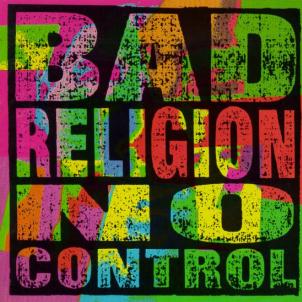
No Control is the fourth album by American punk rock band Bad Religion, released on November 2, 1989, through Epitaph Records. Bad Religion began work on the album while touring in support of their previous album, Suffer (1988). No Control is stylistically faster than its predecessor, owing more to hardcore punk. Additionally, it was the first Bad Religion album not to feature a lineup change from the previous album.
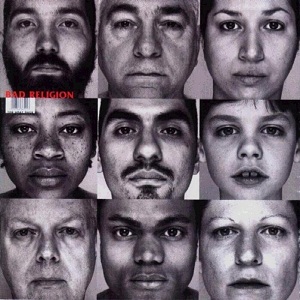
The Gray Race is the ninth full-length album of the punk rock band Bad Religion, which was released in 1996. It was the follow-up to the band's highly successful 1994 album Stranger Than Fiction.

S&M Airlines is the second studio album by the American punk rock band NOFX. It was released on September 5, 1989, through Epitaph Records. It was also the group's first release on Epitaph. A music video was made for the title track. The album was recorded and mixed in only six days at Westbeach Recorders. Bad Religion's Greg Graffin and Brett Gurewitz appear on the final track, a cover of the Fleetwood Mac song "Go Your Own Way". They also did harmonies on a few other songs. Bassist/singer, Fat Mike considers it to be the first real NOFX album. It was heavily inspired by Bad Religion and Rich Kids on LSD, and showed the band moving more towards a melodic and metallic sound. The album sold 3,500 copies upon its release.

Against the Grain is the fifth album by American punk rock band Bad Religion, released on November 23, 1990. It was the last album recorded with drummer Pete Finestone, who left in 1991 to concentrate with his new project The Fishermen. Following his departure, the band's music would take a different direction on their next album, 1992's Generator. Against the Grain was also the first Bad Religion album not to feature a lineup change from the previous two albums.

Greg Hetson is an American guitarist. He was born in Brooklyn, New York and has lived in the Los Angeles area since he was 2 years old. He is Jewish. Active since 1979, Hetson is best known as the guitarist for the influential hardcore punk bands Redd Kross, Circle Jerks and Bad Religion. He is known for his high energy stage antics which people have coined the term "The Hetson Leap". Hetson was a founding member of and also plays guitar in another supergroup, Punk Rock Karaoke, and the hardcore punk band G.F.P.

Bad Religion is the first official recording by the Los Angeles punk rock band Bad Religion. It was released in February 1981 by guitarist Brett Gurewitz's record label Epitaph Records, with the catalog number EPI 001.

How Could Hell Be Any Worse? is the debut studio album by American punk rock band Bad Religion, released on January 19, 1982 by Epitaph Records. Released almost a year after their self-titled EP, it was financed from the sales of the self titled EP and partly by a $1,000 loan by guitarist Brett Gurewitz's father. Its success surprised the band when it sold 10,000 copies in under a year.

Back to the Known is the second EP released by American punk rock band Bad Religion. The name of the EP is a reference to the band abandoning the progressive rock influences of its previous album, 1983's Into the Unknown, and returning to its punk roots.
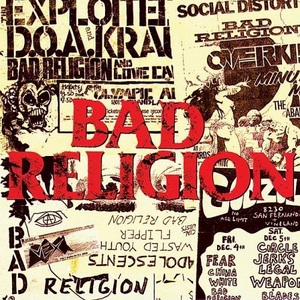
All Ages is a compilation album by the American punk rock band Bad Religion. It was released on July 26, 1995, through Epitaph Records. The compilation contains songs from How Could Hell Be Any Worse? to Generator, and two live tracks recorded during their 1994 European tour, which were the first tracks to feature guitarist Brian Baker.
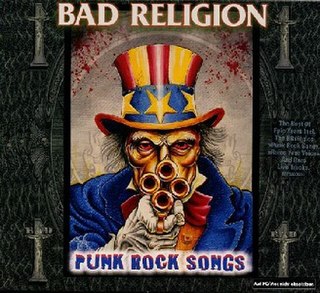
Punk Rock Songs (The Epic Years) is a compilation album by Bad Religion, released in 2002. All songs on this compilation are from their tenure on Atlantic and Epic Records from 1994 to 2000, in addition to four live tracks and both the English and German versions of "Punk Rock Song". Punk Rock Songs was released by Epic without any input from the band members, as Bad Religion had already returned to Epitaph Records, and as of 2017, it has not been released in the United States.
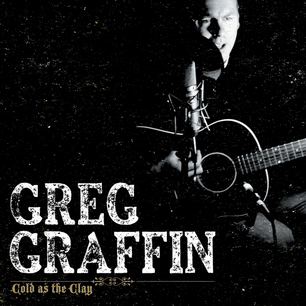
Cold as the Clay is the second solo album by Bad Religion's vocalist Greg Graffin. It was released on July 10, 2006 in Europe, and the following day in the United States. It follows on from Graffin's 1997 release of American Lesion.

New Maps of Hell is the fourteenth studio album by Bad Religion, released on July 10, 2007.


















